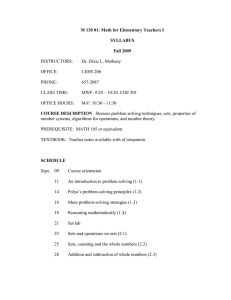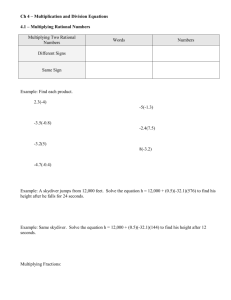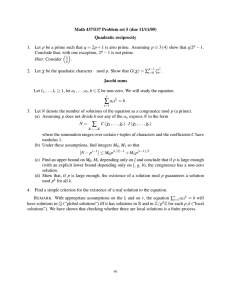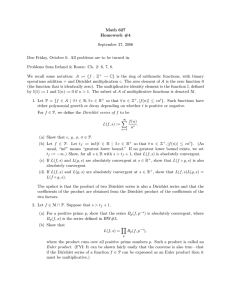Math 627 Homework #3 September 20, 2006
advertisement
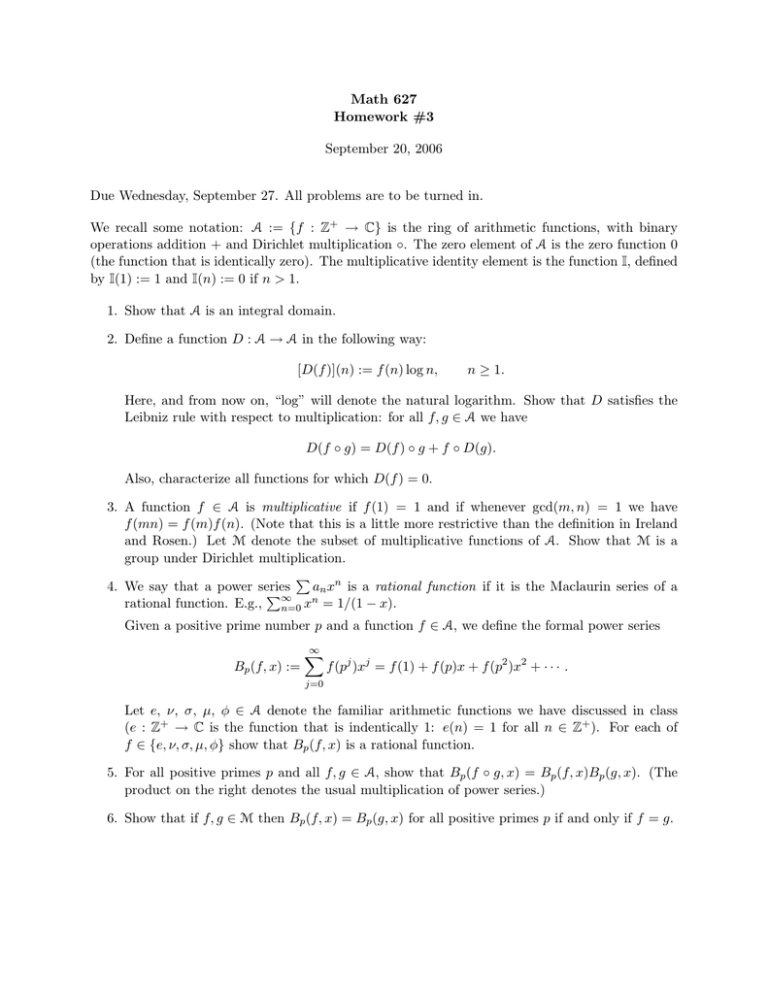
Math 627
Homework #3
September 20, 2006
Due Wednesday, September 27. All problems are to be turned in.
We recall some notation: A := {f : Z+ → C} is the ring of arithmetic functions, with binary
operations addition + and Dirichlet multiplication ◦. The zero element of A is the zero function 0
(the function that is identically zero). The multiplicative identity element is the function I, defined
by I(1) := 1 and I(n) := 0 if n > 1.
1. Show that A is an integral domain.
2. Define a function D : A → A in the following way:
[D(f )](n) := f (n) log n,
n ≥ 1.
Here, and from now on, “log” will denote the natural logarithm. Show that D satisfies the
Leibniz rule with respect to multiplication: for all f, g ∈ A we have
D(f ◦ g) = D(f ) ◦ g + f ◦ D(g).
Also, characterize all functions for which D(f ) = 0.
3. A function f ∈ A is multiplicative if f (1) = 1 and if whenever gcd(m, n) = 1 we have
f (mn) = f (m)f (n). (Note that this is a little more restrictive than the definition in Ireland
and Rosen.) Let M denote the subset of multiplicative functions of A. Show that M is a
group under Dirichlet multiplication.
P
n
4. We say that a power series
P∞ nan x is a rational function if it is the Maclaurin series of a
rational function. E.g., n=0 x = 1/(1 − x).
Given a positive prime number p and a function f ∈ A, we define the formal power series
Bp (f, x) :=
∞
X
f (pj )xj = f (1) + f (p)x + f (p2 )x2 + · · · .
j=0
Let e, ν, σ, µ, φ ∈ A denote the familiar arithmetic functions we have discussed in class
(e : Z+ → C is the function that is indentically 1: e(n) = 1 for all n ∈ Z+ ). For each of
f ∈ {e, ν, σ, µ, φ} show that Bp (f, x) is a rational function.
5. For all positive primes p and all f, g ∈ A, show that Bp (f ◦ g, x) = Bp (f, x)Bp (g, x). (The
product on the right denotes the usual multiplication of power series.)
6. Show that if f, g ∈ M then Bp (f, x) = Bp (g, x) for all positive primes p if and only if f = g.
7. Let f ∈ M and g ∈ A, and let p be a positive prime number. Suppose that (A) for all e ≥ 1
we have
f (pe+1 ) = f (p)f (pe ) − g(p)f (pe−1 ).
Show that (B) we have
Bp (f, x) =
Conversely show that (B) implies (A).
1
.
1 − f (p)x + g(p)x2



